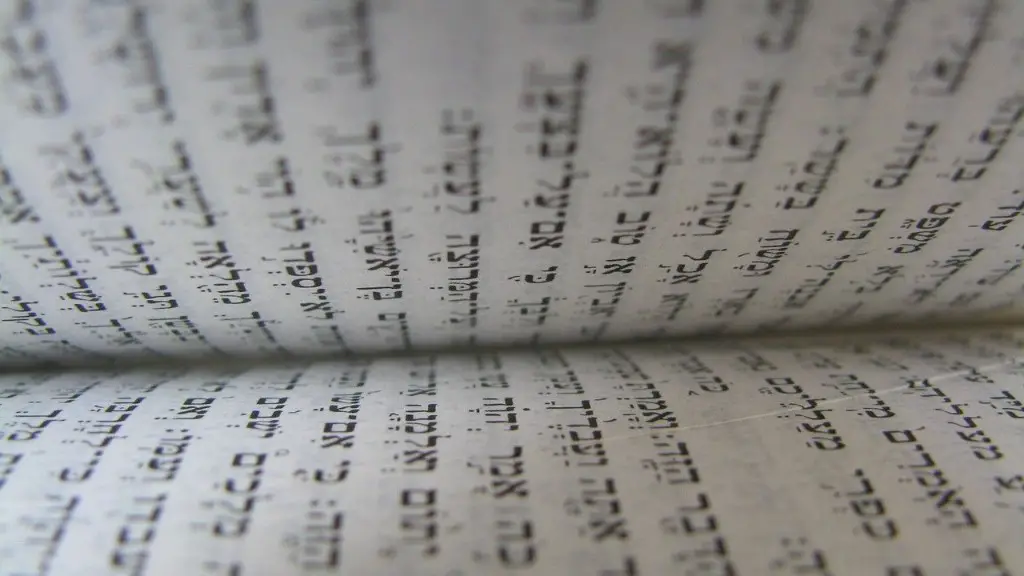Judaism is a religion which is composed of many different branches, each of which has its own unique beliefs and religious practices. The three main branches of Judaism are Orthodox, Conservative and Reform, each with its own distinct interpretations of traditional Jewish teachings.
Orthodox Judaism, which is the most traditional form of the religion, is based on the belief that the Torah, the Jewish holy text, is the literal and immutable word of God, and is to be followed exactly as it is written. Orthodox Jews adhere to a strict interpretation of both Jewish dietary laws and the laws of Sabbath observance. They accept the decisions of the Talmud and reject any form of change or innovation. Men and women will usually sit separately during services, and will attend separate seminaries.
Conservative Judaism is a more relaxed interpretation of Judaism. Though still based on the traditions and foundations of the religion, Conservative Jews believe that observance of Jewish law can evolve over time and should be adapted to changing circumstances. While there is still an emphasis on following traditional law, Conservative Jews also accept the concept of modern interpretation and creativity when approaching the application of such rules. As such, there are looser rules concerning Sabbath observance, intermarriage, and other areas of religious observance. Men and women are allowed to sit together in services, and Conservative seminaries are open to both sexes.
Reform Judaism is the most liberal and progressive branch of the religion. It is based on the belief that Jewish rules and traditions can be adapted to ensure their relevance and meaning in modern society, and that the faith should evolve and grow as the world changes. Reform Judaism embraces the idea of progress, and often seeks to reconcile the teachings of the Torah with values that are more in keeping with contemporary culture. Women have full equality in Reform Judaism, and a much greater role in religious ceremonies than in the other branches. Reform Jews are generally more relaxed about the observance of dietary and other laws, and emphasize the importance of social justice and social action.
Beliefs and Practices
Despite their various differences, all of the branches of Judaism share certain core beliefs and values. These include the monotheistic belief in one God, and the importance of ethical and moral behavior in the conduct of everyday life. In addition to this, each branch maintains specific beliefs and practices which make them distinct from one another. Orthodox Jews are usually stricter in their observance of rituals and laws, while Conservative and Reform Jews may take a more flexible approach.
One of the main differences between the branches of Judaism is in their approach to Halacha, or Jewish Law. Orthodox Jews are guided by the authority of the Talmud, which contains the entire corpus of Jewish law. Conservative and Reform Jews generally interpret the Halacha with more latitude, often looking to modern methods of interpretation and taking into account the changing social context. This also applies to the place of women in Judaism; Orthodox Judaism operates on the traditional principle that women are not allowed to lead services or read from the Torah, while the Conservative and Reform branches allow for such practices.
In recent years, some movements within Judaism have began to embrace new ideas, such as Renewal and Reconstructionist Judaism, which focus on spiritual exploration and experiential learning as a way of exploring the modern expression of ancient religious teachings. These movements represent a new wave of creative and progressive interpretations of the faith.
Impact on Communities
The various branches of Judaism have had a major impact on both the global Jewish community and the wider world. Each of these branches has created its own vibrant and engaged tradition, enriching the diversity and enrichment of Judaism both in Israel and across the diaspora. In the contemporary era, these branches can be seen to represent a sort of unity through their shared and distinct beliefs, rituals and cultures. While the differences between the branches may at times be emphasized, it can also be argued that these branches are united by a common drive to expand and explore the spiritual and ethical legacy of Judaism.
The different branches of Judaism also reflect the diversity among Jews around the world. As Jews from different backgrounds interact and come into contact with each other, these branches help to create a sense of shared identity, a common purpose and a sense of unity. This unity is something that is cherished within the Jewish community, and something that helps to strengthen and reinforce the Jewish identity.
Future Prospects
As the world continues to change, and Judaism with it, the various branches of Judaism will no doubt continue to evolve and adapt. Some branches may become more rigid, while others may become more progressive. Nonetheless, the distinct pathways taken by the different branches will no doubt remain a point of strength and vitality for the worldwide Jewish community.
Perhaps the greatest strength of Judaism lies in its ability to both embrace change and remain rooted in traditions and teachings that have stood the test of time. The different branches of Judaism demonstrate this strength, and it is this strength that will ensure its longevity and its ongoing relevance in the years to come.
Interfaith Relationships
The different branches of Judaism are typically not in conflict with one another, and many Jews embrace a multifaceted religious identity. This is often seen in the growing acceptance of interfaith relationships and families, which bring together individuals from different backgrounds and beliefs. These new, emerging forms of religious identity often bring together individuals from different branches of Judaism, reflecting the greater trend of cross-cultural acceptance and understanding.
The different branches of Judaism represent an array of traditions and beliefs, and this diversity is something that is to be celebrated. Though these branches may differ in their interpretations and practices, they are all bound together by a shared commitment to the timeless teachings of Judaism. As the future continues to unfold, the various branches of Judaism will no doubt continue to shape and enrich the Jewish faith and its adherents.
Unity in Mediation
The various branches of Judaism have often found common ground through mediation, and this has been seen in recent years in the Israeli-Palestinian conflict. One example is the Likud party’s recent acceptance of a two-state solution, which has been strongly and widely supported by the Orthodox and Conservative branches of Judaism. This acceptance is a clear indication that, in spite of their differences, the branches of Judaism can come together on particular issues when necessary.
Mediation can also be seen in the work of the various branches in strengthening relationships between Jews and Gentiles. This has been particularly evident in interfaith initiatives such as joint prayer services and dialogues, which have been led by both Reform and Conservative Jews. The unification of the different branches of Judaism is perhaps strongest when it comes to interfaith activities, emphasizing the power of unity in the face of religious and cultural differences.
Arts and Culture
The different branches of Judaism have also had a profound influence on Jewish arts and culture. Each branch has developed its own particular artistic traditions, from the vibrant music and theatrical performances of Reform Jews to the architectural styles of Orthodox Jews. Moreover, many traditional Jewish creations, such as challah bread and Latkes, have been adapted by the different branches to fit their own tastes and styles.
The different branches of Judaism have also played a major role in creating distinct and vibrant cultural expressions, including the establishment of cultural organizations and centers that promote the teaching, practice and appreciation of Judaism. These organizations and centers have been immensely valuable in helping to build bridges between different groups and in furthering the collective understanding of Jewish culture.
The various branches of Judaism each have their own unique contribution to make to the richness and beauty of the Jewish faith. From their interpretations of halacha to their shared commitment to justice and peace, Judaism is a religion of unfathomable depth and breadth, and each of its branches helps to create a diversity that is truly something to be cherished.



